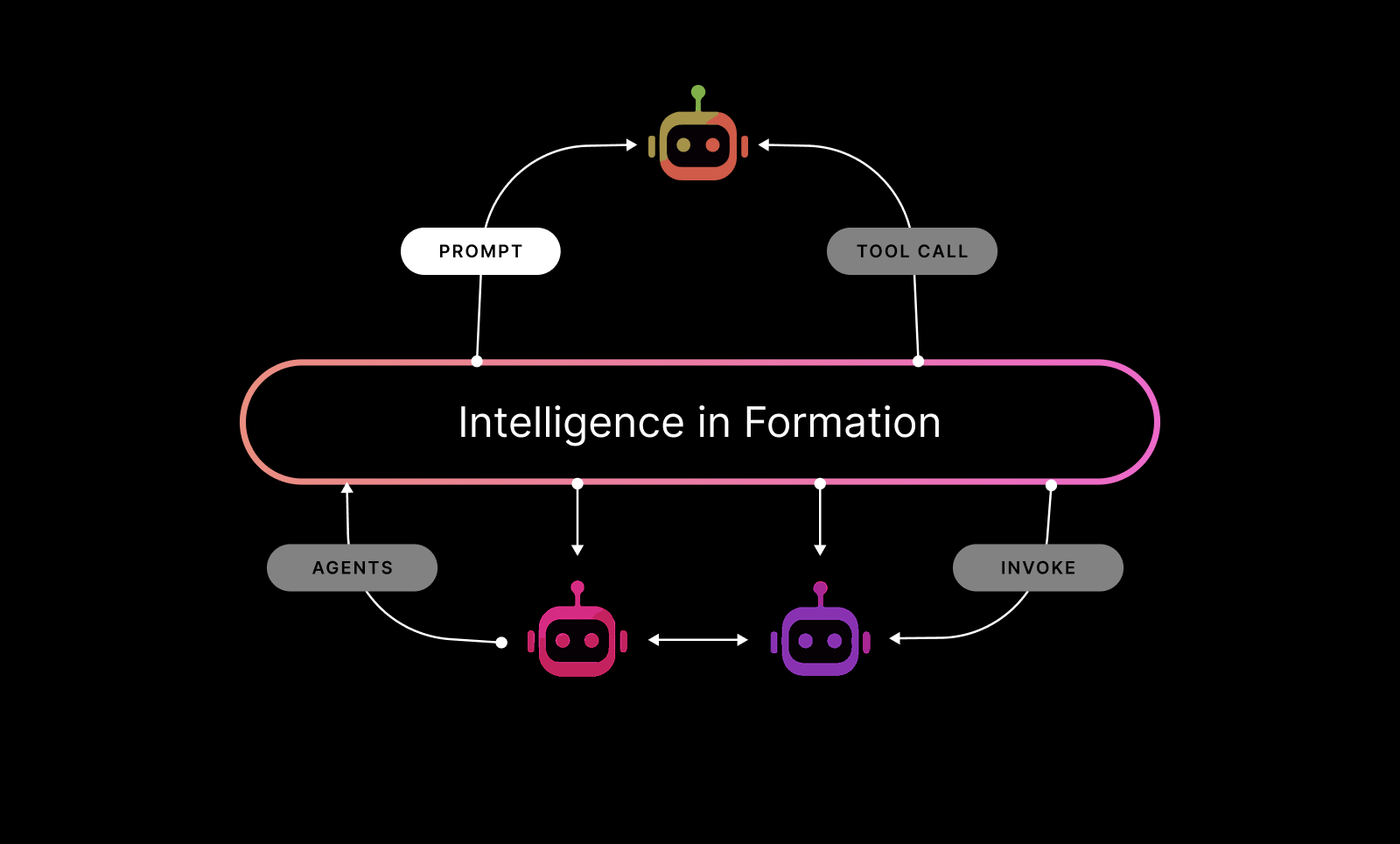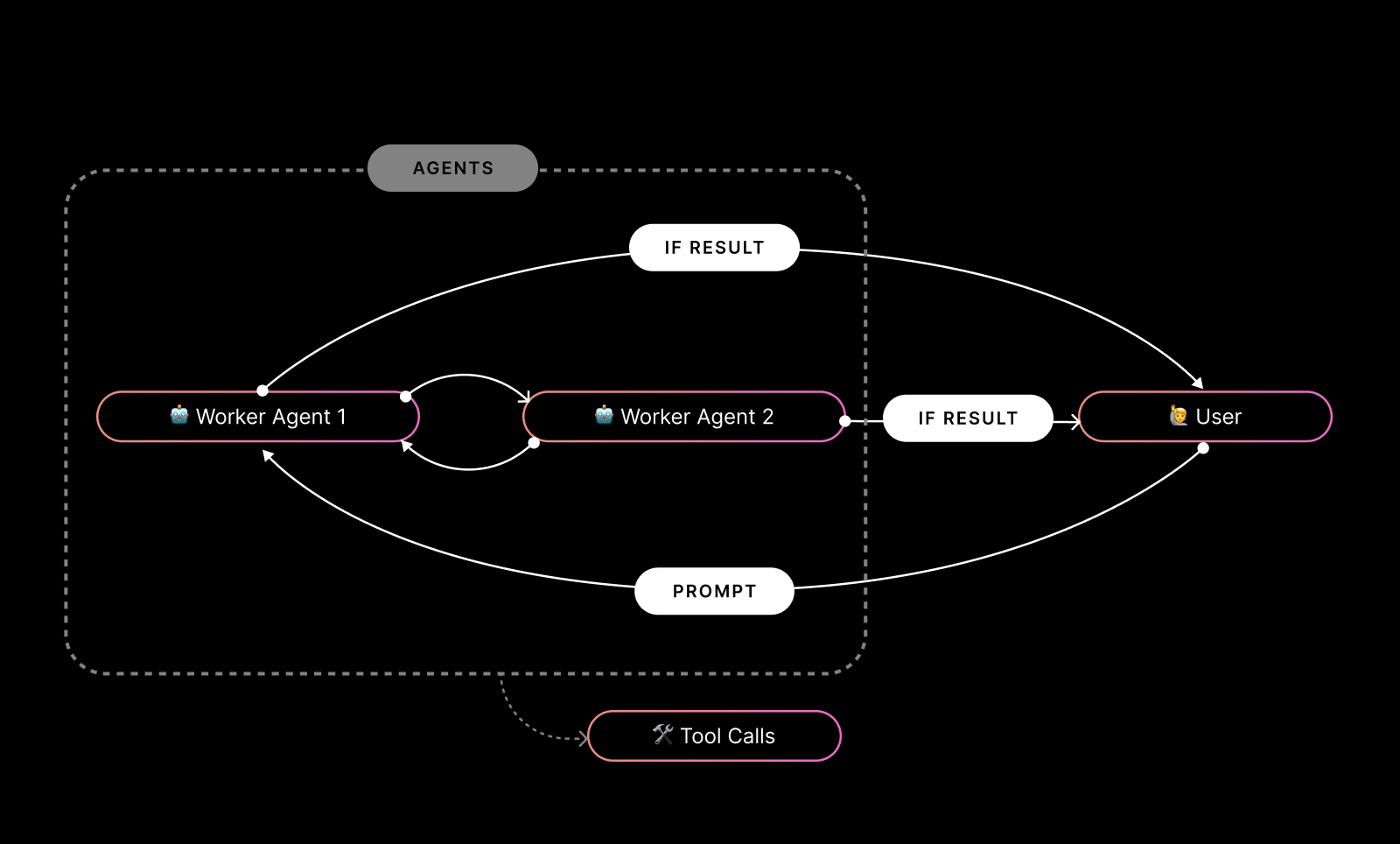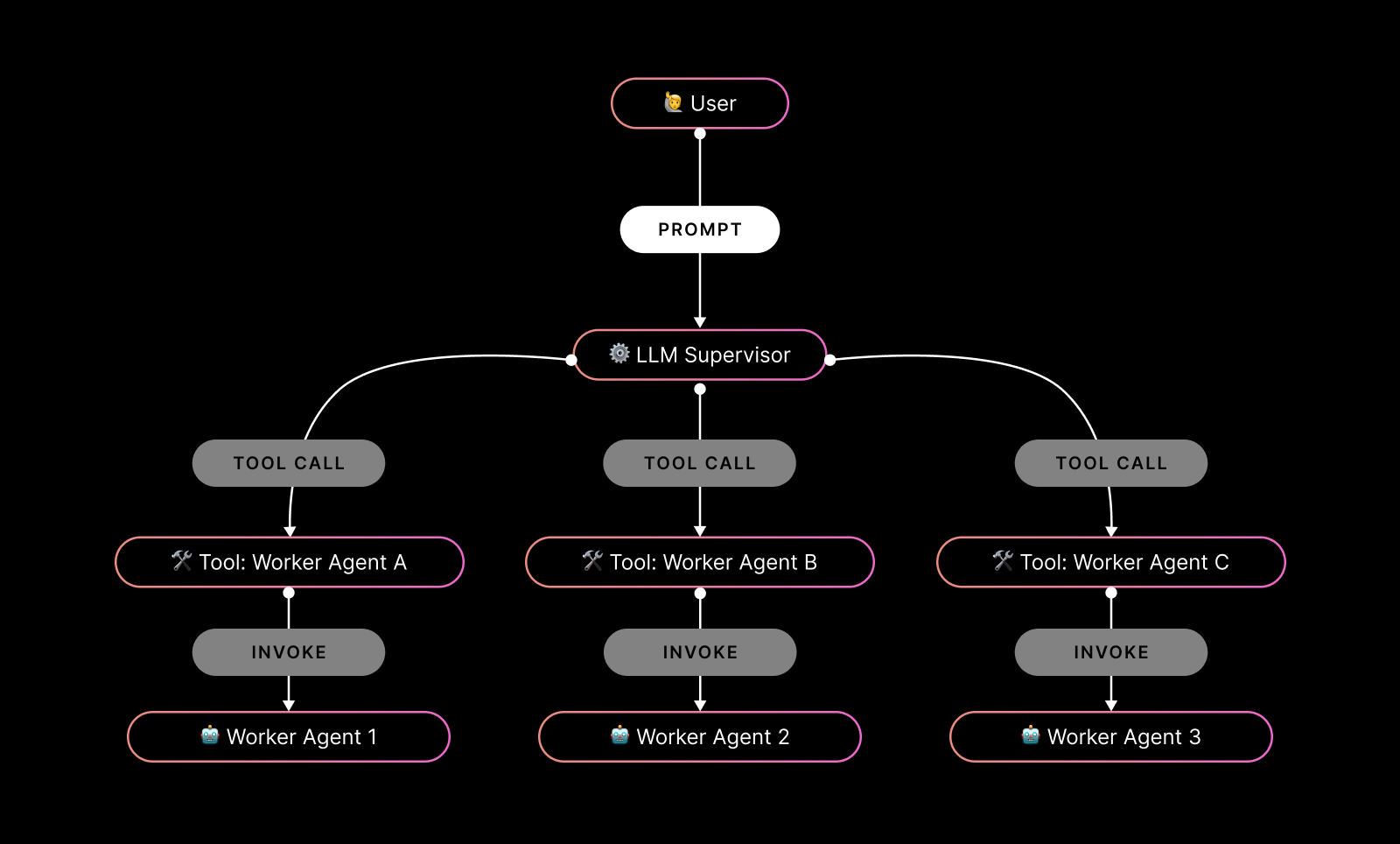Making sense of multi-agent architectures
09 June 2025
This article will take a high-level look at the most common architectural patterns, along with the trade-offs that come with each.

As generative AI systems grow in complexity, so too does the need for more structured orchestration. Multi-agent architectures provide a means to break down large tasks into smaller, coordinated parts, each handled by semi-autonomous agents with distinct roles.
While the concept is powerful, the implementation isn't one-size-fits-all all. Different multi-agent designs serve different needs, and the right choice can impact scalability and maintainability.
First though, let's understand what an agent is.
What is an agent?
In the context of generative AI, an agent is a AI system designed to act autonomously towards completing a goal. It typically uses a large language model (LLM) to interpret inputs, make decisions and interact with tools, users or other agents. Agents can be designed to handle everything from summarising content and retrieving information to coordinating workflows and making business decisions. When multiple agents are orchestrated together they can tackle complex multi-step problems more effectively than a single model acting alone.
Network architecture
In the network architecture, any agent can call any other agent. This flexibility allows for emergent strategies and dynamic decision making, especially in creative or open-ended problem spaces. However, this freedom comes at a cost - debugging, reasoning about flows and maintaining control all become harder as the number of agents grows. For teams experimenting with loosely defined use cases or creative ideation, this might be a good fit, but be prepared to invest in robust logging and error handling.

Supervisor architecture
The supervisor model introduces a central coordinator that delegates tasks to worker agents. It simplifies control flow, making it easier to reason about outcomes and refine decision-making. This is a solid choice for teams prioritising traceability, reproducibility or regulatory oversight. The downside, however, is less flexibility. The supervisor can become a bottleneck if it needs to micromanage too many agents or lacks the context to make nuanced decisions.

Tool calling supervisors
A popular variant of the supervisor model is tool-calling, where agents are exposed as tools that a central LLM can invoke. This architecture works especially well when using platforms like LangChain, which provide built-in support for tool definition and routing. It also maps neatly to traditional LLM prompting patterns. This is a great entry point for teams building early prototypes using off-the-shelf agents and open-source frameworks.

Hierarchical architectures
When a single supervisor isn't enough, a hierarchical system of supervisors can be deployed. Here, supervisors can oversee other supervisors, allowing teams to model more complex workflows. Think of this like an enterprise org chart - clear accountability and delegation, but with extra overhead in defining roles and managing coordination. Hierarchical architectures shine in large multi-domain applications where agents operate in distinct but interrelated areas.

Custom multi-agent workflows
For teams building deeply integrated systems, custom workflows offer maximum control. These systems define fixed paths for some agents, whilst others retain decision-making authority. While this approach requires more upfront design and bespoke logic, it can lead to optimal performance in domain-specific scenarios. This is often the architecture of choice in production systems where performance, cost and determinism are non-negotiable.
What’s right for you?
Choosing the right architecture begins with understanding your use case.
Are you experimenting with generative capabilities in an open-ended way? Networked agents offer flexibility, but may become hard to manage at scale.
Do you need a system that’s easy to audit or refine? Supervisor-based models provide clarity and control.
Working with off-the-shelf components or early-stage ideas? Tool-based supervisors can help you spin up fast and stay modular.
For large-scale systems across multiple domains, a hierarchical setup provides structure, while custom workflows are best suited to environments where performance, predictability, and tight domain alignment matter most.
There�’s no universal answer - each architecture brings its own strengths and limitations. The key is to weigh flexibility against control, ease of development against scalability and experimentation against precision.
Start with the constraints and goals of your project and let those inform the architecture you choose.

Chris van Es
Head of Technology